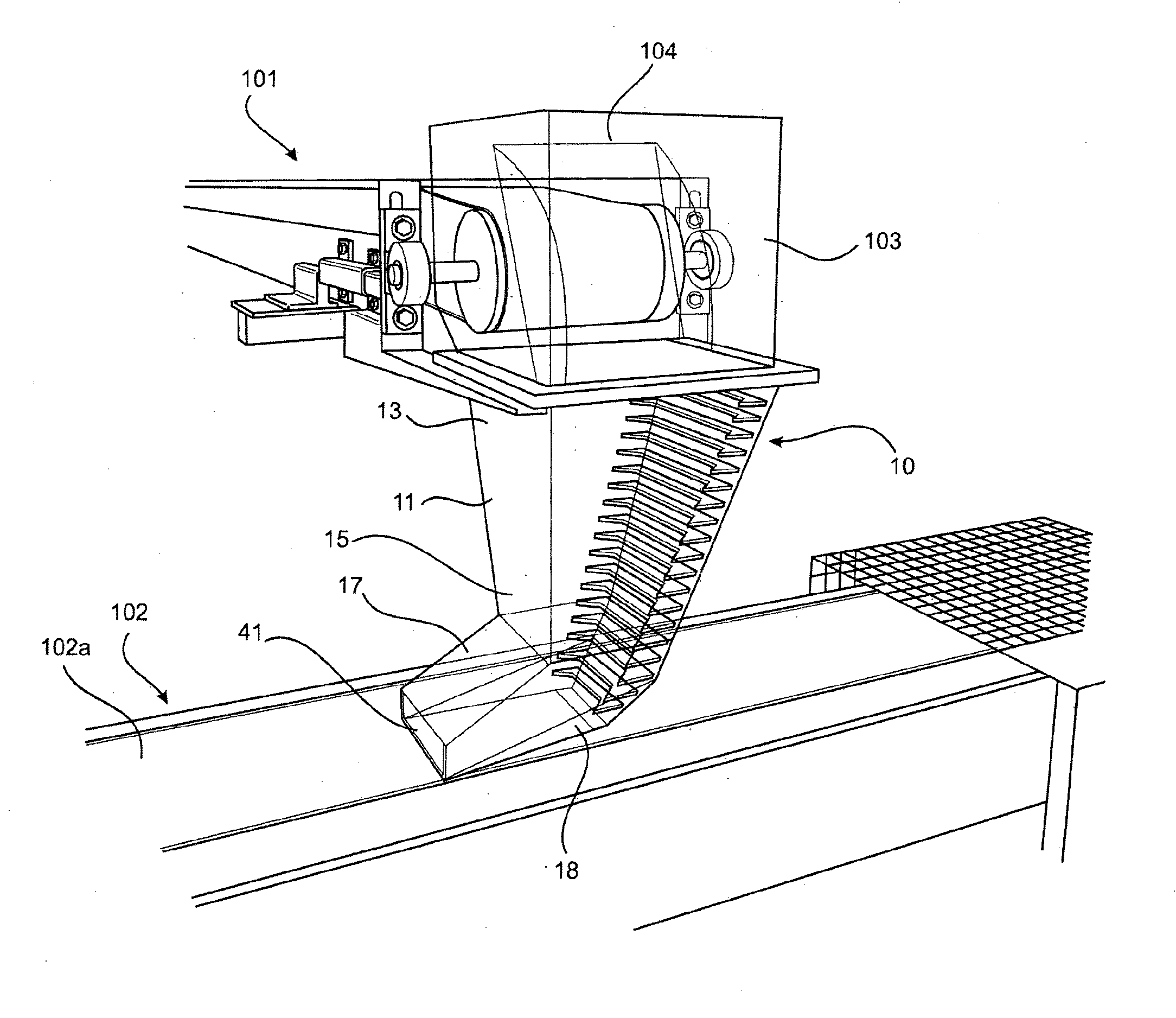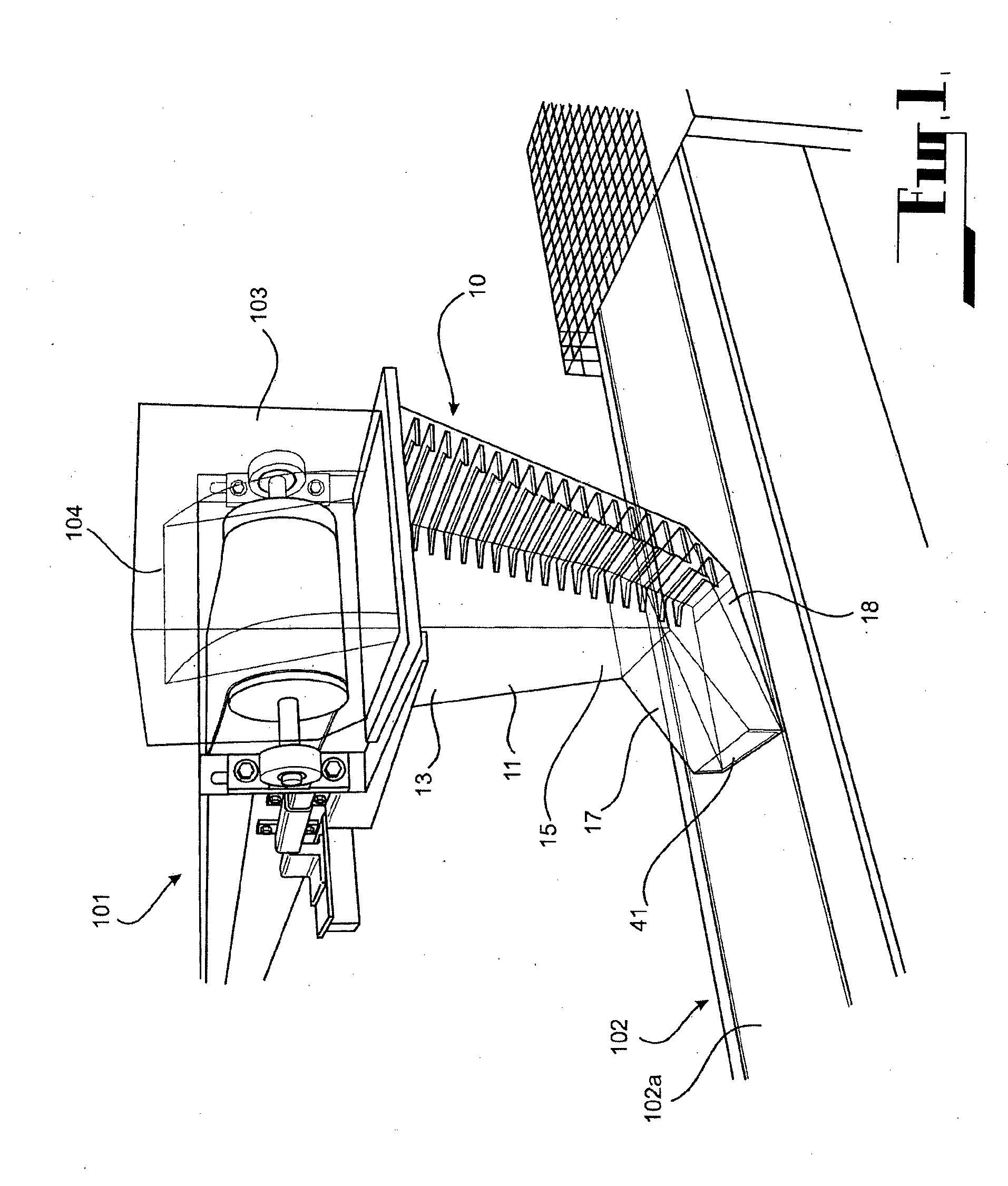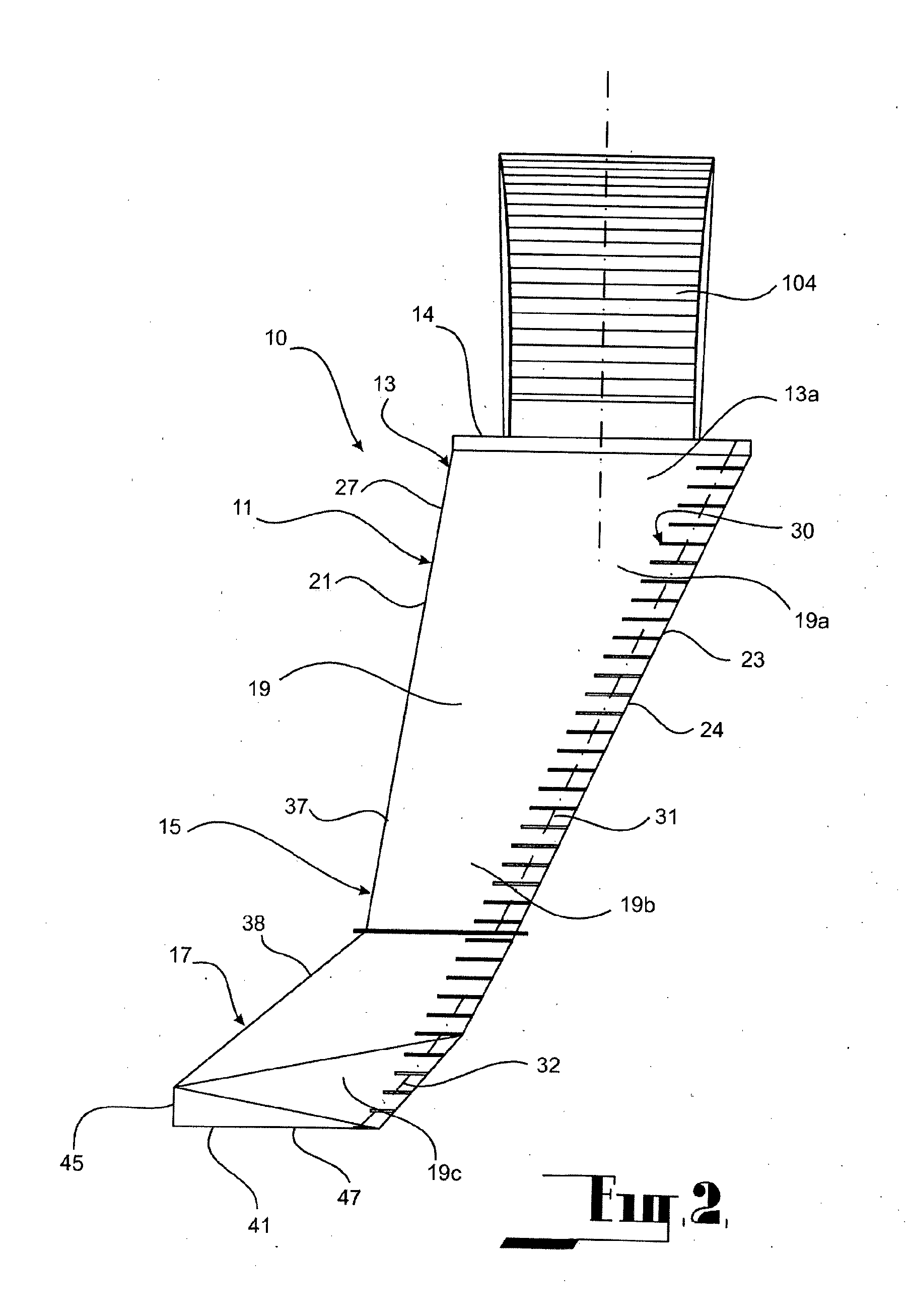Transfer chute
- Summary
- Abstract
- Description
- Claims
- Application Information
AI Technical Summary
Benefits of technology
Problems solved by technology
Method used
Image
Examples
Embodiment Construction
[0132]In order to design a transfer chute according to the invention, there are two very important issues that must be addressed. These issues are: (1) the calculation of the material trajectory from the discharge belt into the body of the transfer; and (2) the understanding and development of a flow model for the bulk material being handled such that the elements of the transfer chute can be correctly designed.
[0133]There are published trajectory calculation models that will allow the accurate prediction of the material trajectory. The applicants have their own proprietary method that is used for the trajectory calculations. By way of example, the trajectory of a material flow into a transfer chute is calculated in accordance with methodology disclosed in the aforementioned publication “The Transfer Chute Design Manual for Conveyor Belt Systems”.
[0134]Developing a flow model for various ore types is a very complex science. Conventionally the methodology has been an extension of tec...
PUM
 Login to View More
Login to View More Abstract
Description
Claims
Application Information
 Login to View More
Login to View More - R&D
- Intellectual Property
- Life Sciences
- Materials
- Tech Scout
- Unparalleled Data Quality
- Higher Quality Content
- 60% Fewer Hallucinations
Browse by: Latest US Patents, China's latest patents, Technical Efficacy Thesaurus, Application Domain, Technology Topic, Popular Technical Reports.
© 2025 PatSnap. All rights reserved.Legal|Privacy policy|Modern Slavery Act Transparency Statement|Sitemap|About US| Contact US: help@patsnap.com



